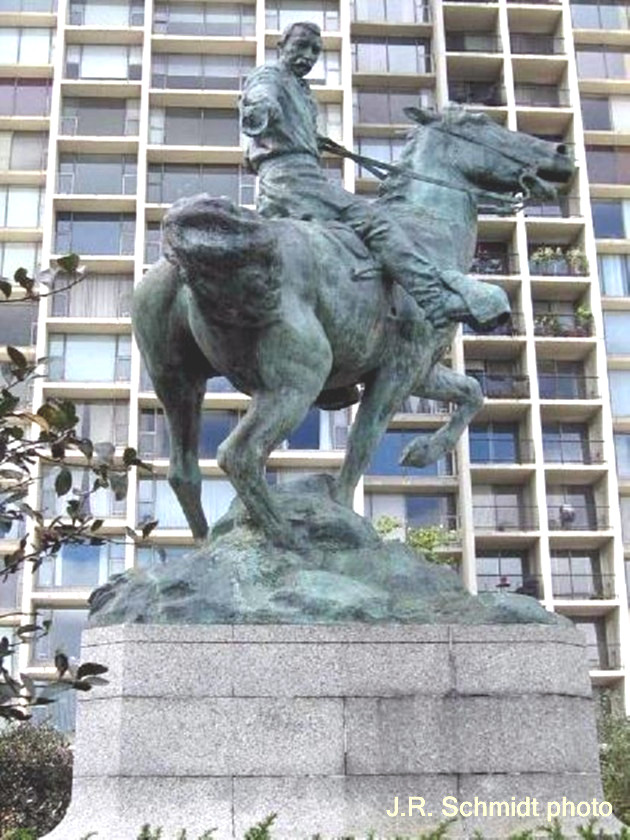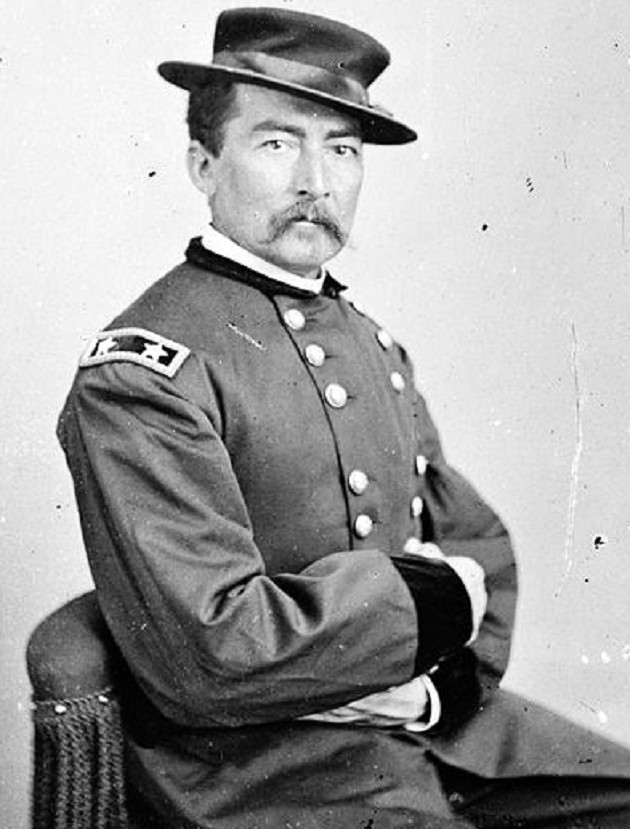The Sheridan Statue
By John R. Schmidt
Sheridan the Statue
1
/ 2

Sheridan the Statue
1
/ 2
The Sheridan Statue
By John R. Schmidt
WBEZ brings you fact-based news and information.
Sign up for our newsletters
to stay up to date on the stories that matter.
The statue on Sheridan Road near Belmont has always been one of my favorites. I often passed it when I was a child, in the days when the Addison bus went downtown. It reminded me of those Frederick Remington illustrations in books about the Old West.

Born in 1831, Sheridan grew up in small-town Ohio. As a teenager he clerked in a store, then won appointment to West Point. His graduation was delayed a year when he was suspended for fighting with another cadet.
He was a lieutenant when Fort Sumter was attacked in 1861. During the war Sheridan proved to be an aggressive but effective commander, like his friend Grant. At the end of the war he was a general.
Sheridan’s next assignments were in the West. Among his jobs was making sure the native tribes got onto reservations and stayed there. Today his ruthless actions are condemned by many historians. At the time, most Americans considered him a hero.

He was one of those celebrities whom reporters love to quote. One account has him remarking “The only good Indian I ever knew was dead”—something Sheridan always denied he’d said. But he did confirm another famous quip: “If I owned Texas and Hell, I’d rent out Texas and live in Hell.”
Sheridan’s Chicago connection came during the Great Fire of 1871. With martial law declared, the general took charge of the situation, and kept the city reasonably peaceful. Some years later Sheridan was married in Chicago. When the couple resettled in Washington, a group of wealthy Chicagoans bought them a house there.
Like many Civil War generals, Sheridan had presidential ambitions. But he died of a heart attack in 1888, only 57 years old. He was then General-in-Chief of the U.S. Army.
The Sheridan statue is the work of Gutzon Borglum, completed in 1923, a few years before the artist started carving the faces on Mount Rushmore. Borglum had earlier done a Sheridan statue in Washington.
Sheridan’s local monument has recently endured a bizarre form of vandalism. From time to time the horse’s private parts have been painted over in loud colors. Various culprits have been blamed, ranging from fraternity pledges to the San Francisco Giants baseball team. The Chicago police reportedly have the horse under surveillance, so consider yourself warned.
